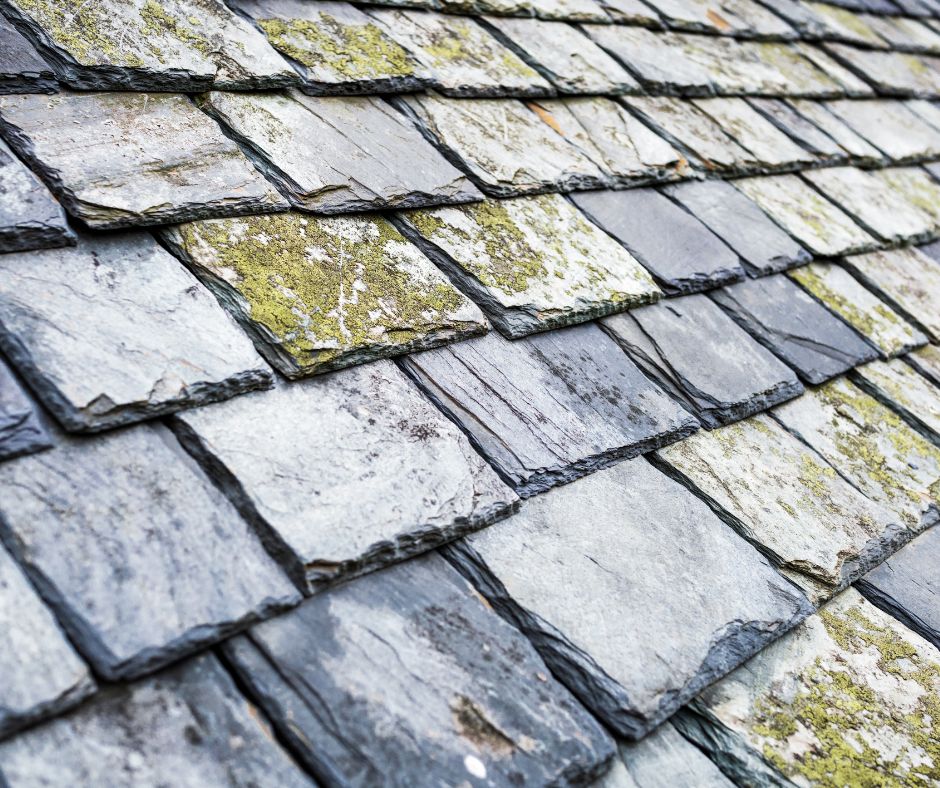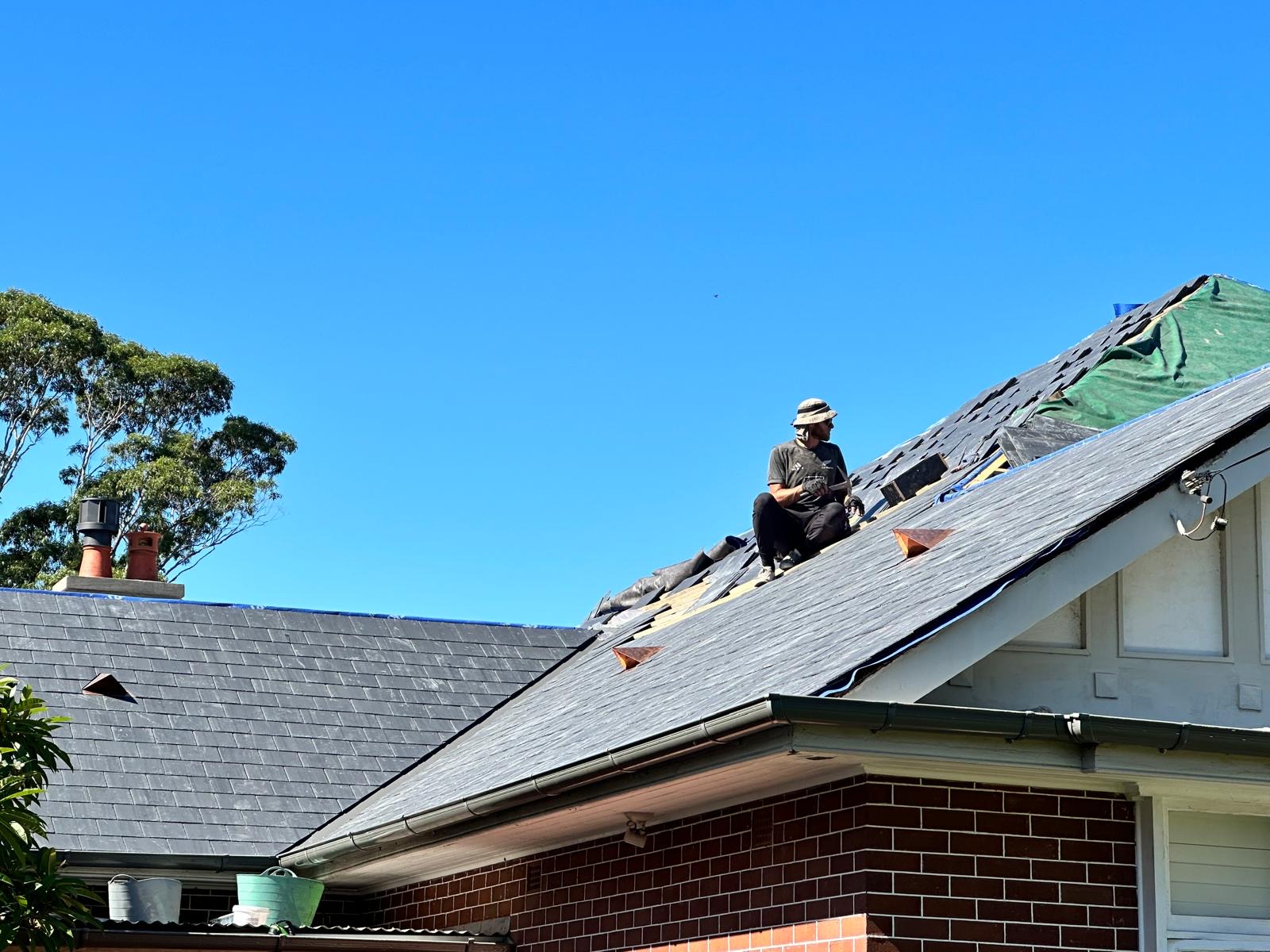Recognise the Warning Signs of Slate Roof Damage Immediately
If you observe symptoms such as slipped or broken slate tiles, noticeable water stains on ceilings, damaged flashing, cracked mortar at the ridge, or the accumulation of slate debris in your gutters, your slate roof may require urgent repairs. Additional alarming indicators include visible sagging, unexpected leaks after rainfall, or water damage around chimneys and roof valleys. To prevent potentially costly structural issues and to protect your investment in your roof, it is crucial to schedule regular roof inspections. Early detection of these problems can save you from extensive repairs and major inconveniences in the future.

Understand the Impacts of Water Damage Caused by Roof Leaks
Many homeowners remain unaware of problems with their slate roofs until they begin to notice unsightly water stains appearing on ceilings or water marks on walls. Although slate roofs are celebrated for their remarkable durability and extensive lifespan, they are not immune to wear and tear over time. Components such as nails can corrode, flashing may lift, and one or two tiles might shift enough to allow water to seep in. Surprisingly, a persistent minor leak, rather than a significant storm, can lead to serious damage, gradually worsening the situation over time.
Recognising early warning signs is crucial in preventing a much larger repair bill in the future. Below are essential indicators that suggest your slate roof requires urgent professional attention and repair.
1. Spotting Water Marks on Ceilings as Vital Indicators of Leaks
The emergence of a yellow-brown ring on your ceiling is more than just a cosmetic issue; it signifies a critical warning signal. Water can travel through the internal structure of your home for several metres before finally dripping onto a ceiling area. By the time you observe it, the leak has typically been active for a considerable period. Water generally enters through roof joins or around gutter installations, with stains often appearing in cornice areas, near chimneys, or beneath roof valleys. It’s imperative to treat ceiling stains with utmost seriousness.
2. Detecting Shifting or Uneven Slate Tiles as a Major Concern
slate tiles are installed in tightly arranged rows, and if even one tile begins to shift or dip, it often indicates a failure in the underlying nail. Should multiple tiles exhibit this issue, it may suggest that the battens or underlay have been compromised. While a few loose tiles can often be fixed easily, a larger area of displaced tiles signals that your roof requires immediate attention to avert further damage.
3. Discovering Slate Fragments in Gutters or on the Ground as an Urgent Warning
If you find fragments of slate scattered in your gutters or, more concerning, on the ground after wind or rain, it typically indicates that the tiles are cracking or crumbling. This deterioration may stem from age, impact, or loose fixings. This situation serves as one of the earliest indicators that your roof needs inspection and potential repairs, even if it appears visually acceptable from the street.
4. Evaluating Warped, Lifted, or Rusted Flashings for Potential Water Entry Points
Lead flashing is crucial for protecting essential joints around chimneys, skylights, and roof valleys. If the flashing becomes cracked, lifted, or begins to corrode, it creates a potential entry point for water. While this type of damage might be challenging to detect from ground level, it is often clear from the rooftop. If your roof is over 20 years old and the flashing hasn’t been replaced, it may be time for an upgrade to prevent further complications.
5. Addressing Cracked Mortar Along the Ridge or Gables Before Serious Issues Arise
Cracked or loose ridge capping is a common concern with older roofs. Environmental factors such as rain, wind, and sun gradually erode the mortar over time. If this issue isn’t swiftly addressed, it can lead to water seeping beneath the tiles. Generally, this problem can be rectified with a simple repair rather than necessitating a complete re-roofing, provided it is identified early.
6. Listening for Unusual Ticking or Dripping Sounds After Heavy Rain as an Alert
This may seem unusual, but one of the first signs of a leaking slate roof is the sounds it produces. If you hear ticking, dripping, or the sound of water trickling down inside walls after a storm, this should raise immediate alarm bells. It indicates that water is moving behind the scenes, signalling the urgent need for professional intervention before the next rainfall exacerbates the situation.
7. Assessing Recent Roofing Work for Potential Damage Limitations
It is more common than one might think to encounter issues following recent roofing work. Scaffolding from other trades, solar panel installations, or gutter repairs can inadvertently cause damage to slate tiles. Even walking across a slate roof without proper knowledge of foot placement can result in cracking or dislodging tiles. If you've noticed any changes after recent roofing work, it is prudent to have it inspected to ensure the integrity of your roof.

Initiate Preventative Action: Schedule Your Roof Inspection Today
If any of these warning signs resonate with you, the next crucial step is to arrange a comprehensive inspection. A qualified roofer with expertise in slate roofing can effectively differentiate between normal ageing and issues that require urgent repair.
A thorough inspection should encompass more than a cursory glance; it requires a detailed examination of the condition of the battens, sarking, flashing, and the roof’s ventilation systems. In certain cases, a few tiles may need replacement, while other situations may necessitate extensive repairs. The key is to be proactive and identify potential problems before water damage has the chance to escalate.
Contact us today for a complimentary roofing quote and take the vital first step in safeguarding your home from potential damage.
The Article: Slate Roof Repair: Signs You Need to Act Now first appeared on https://writebuff.com
The Article Slate Roof Repair: Urgent Signs You Shouldn’t Ignore Was Found On https://limitsofstrategy.com

